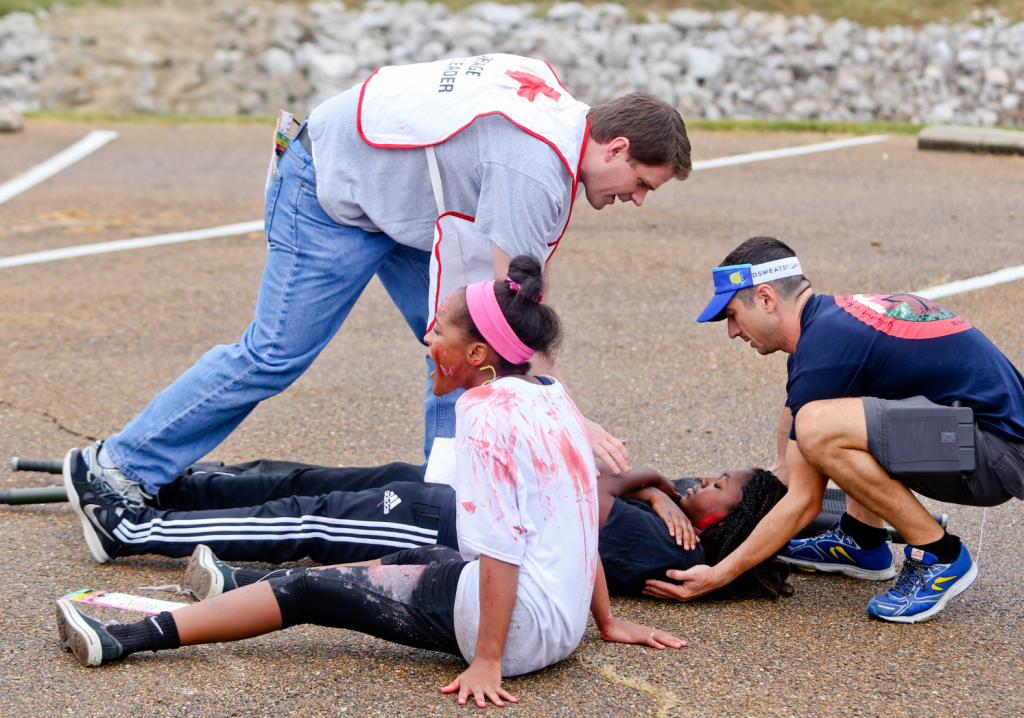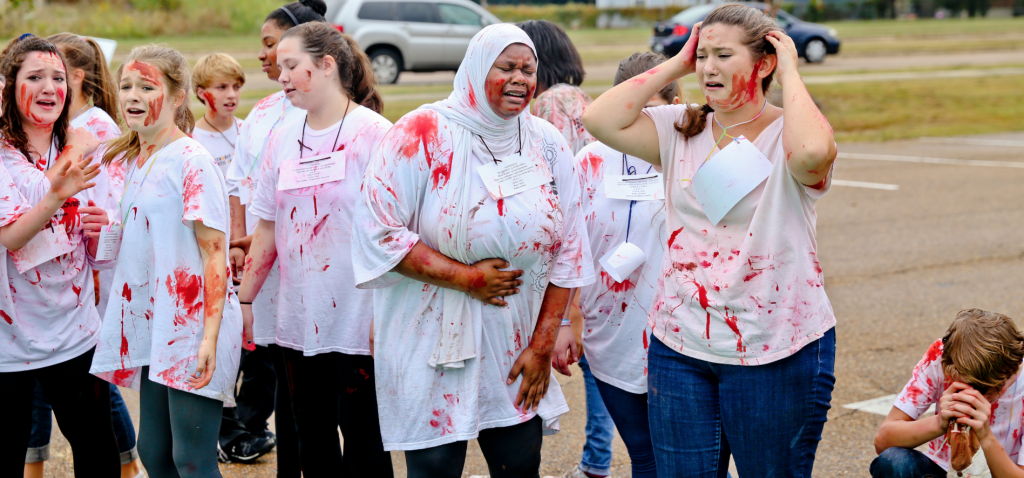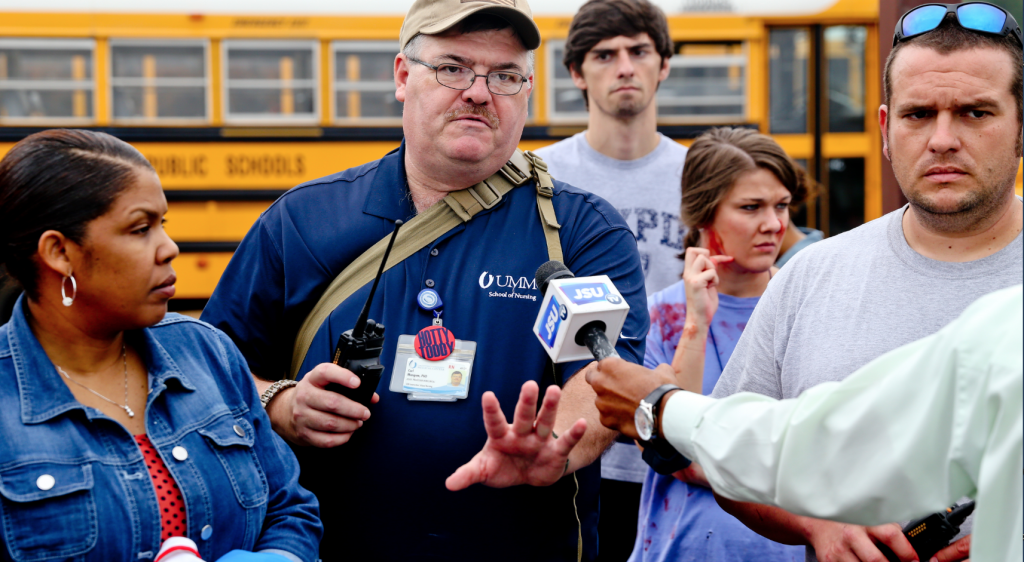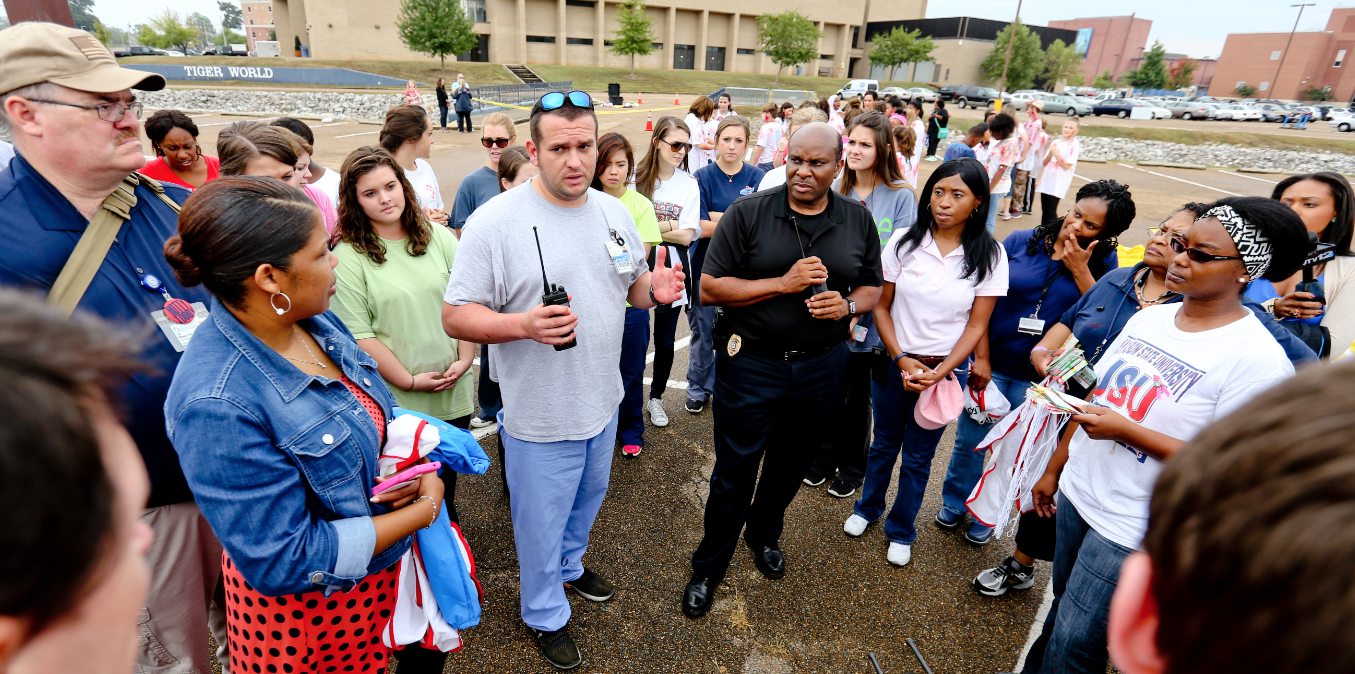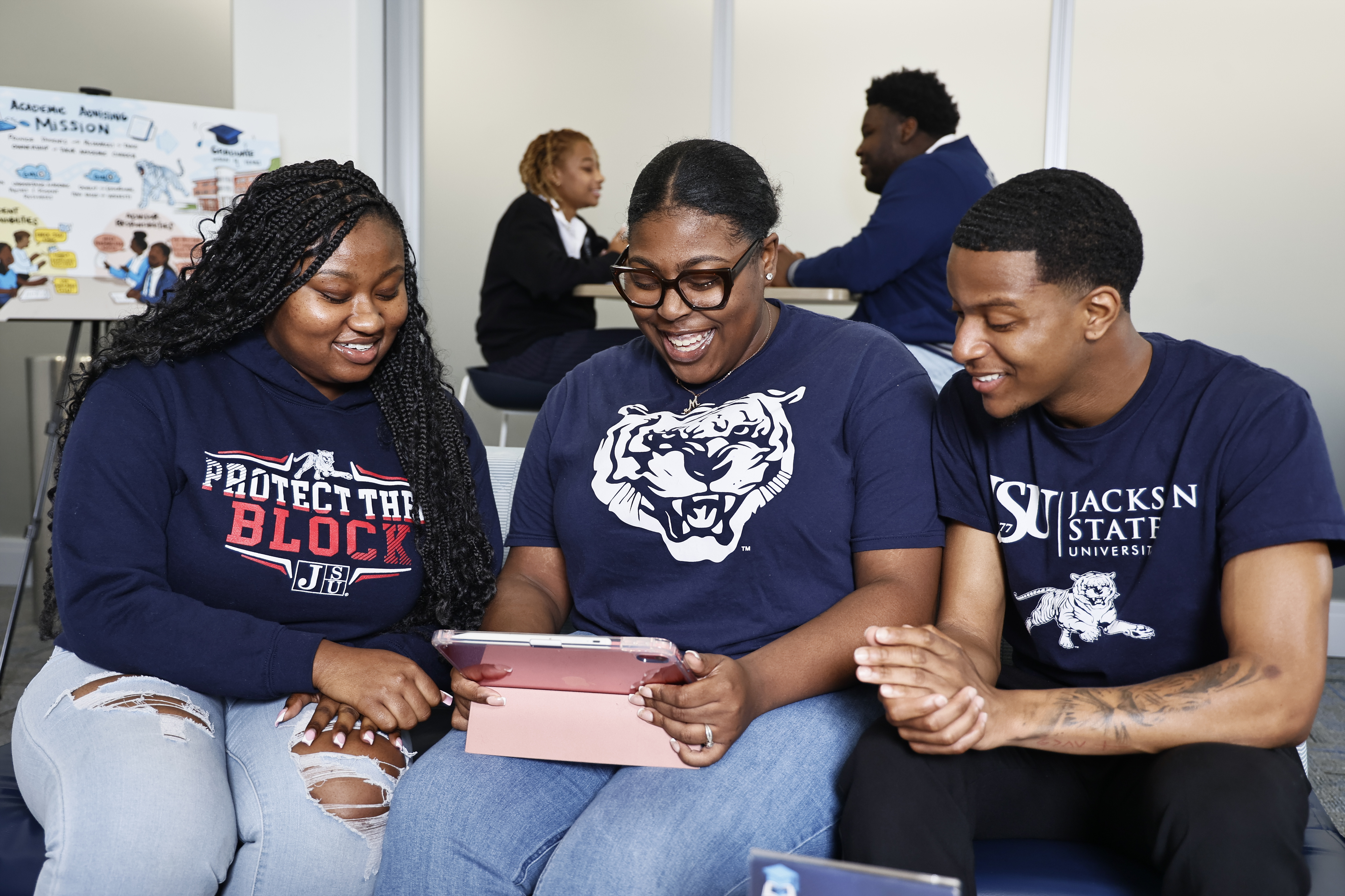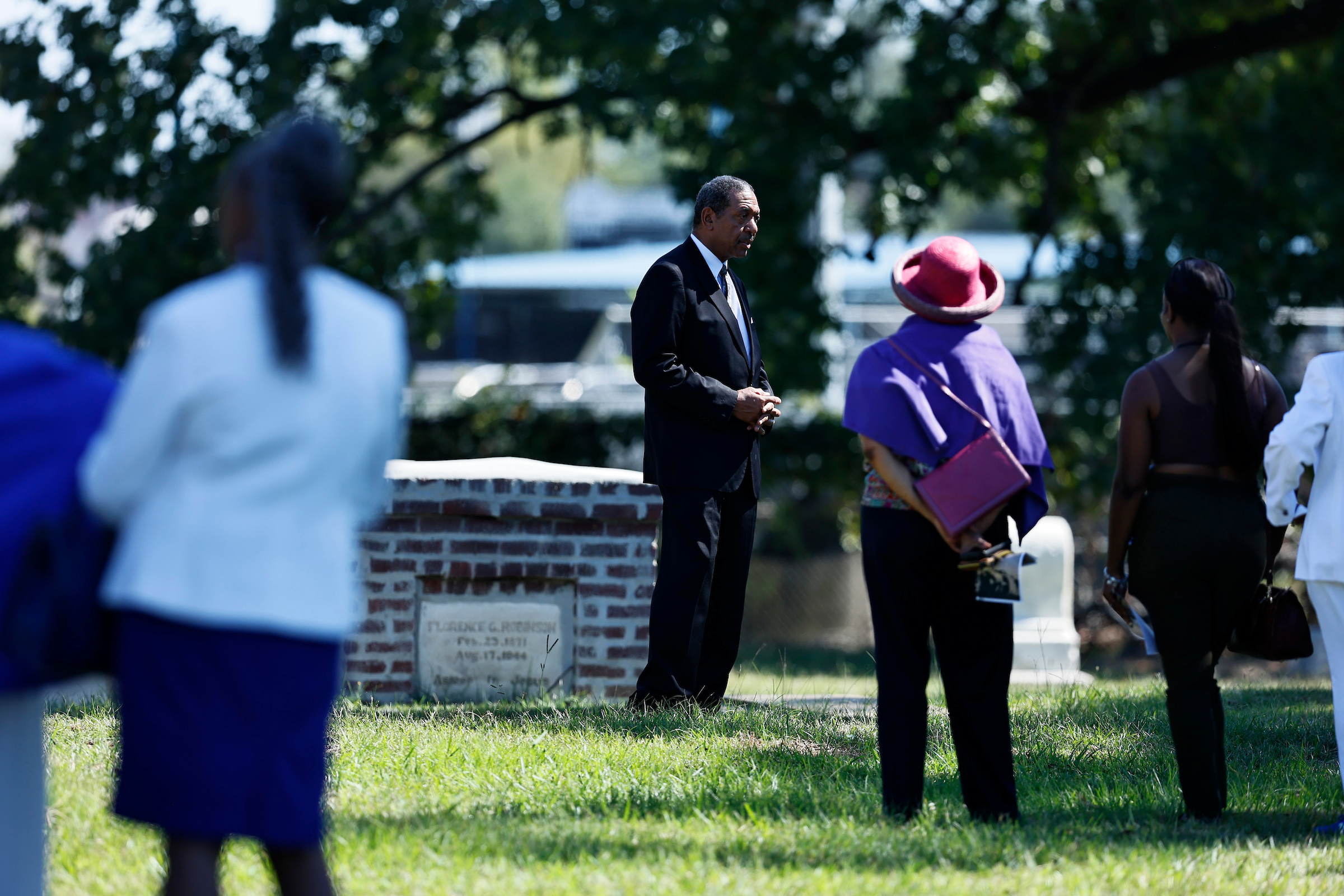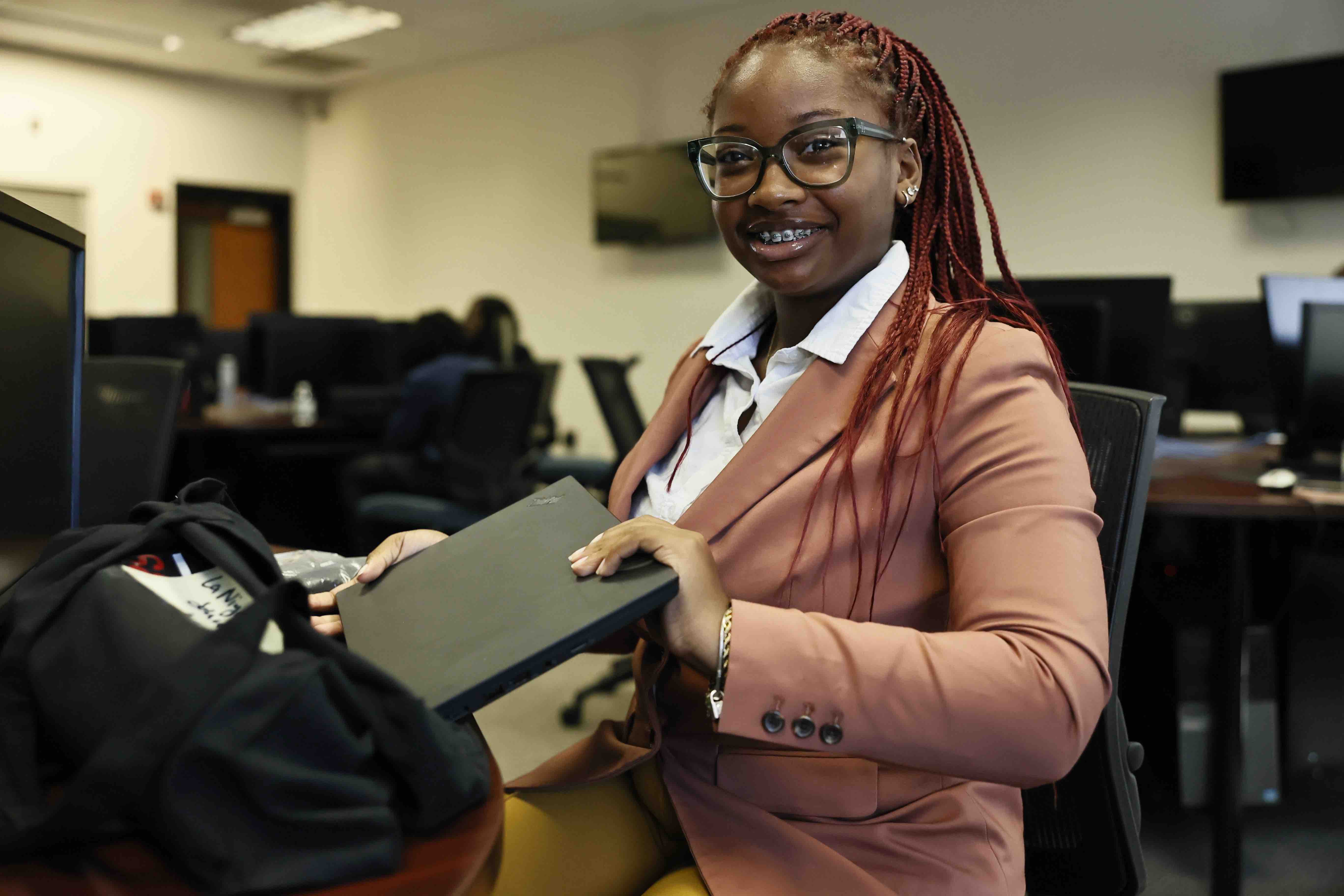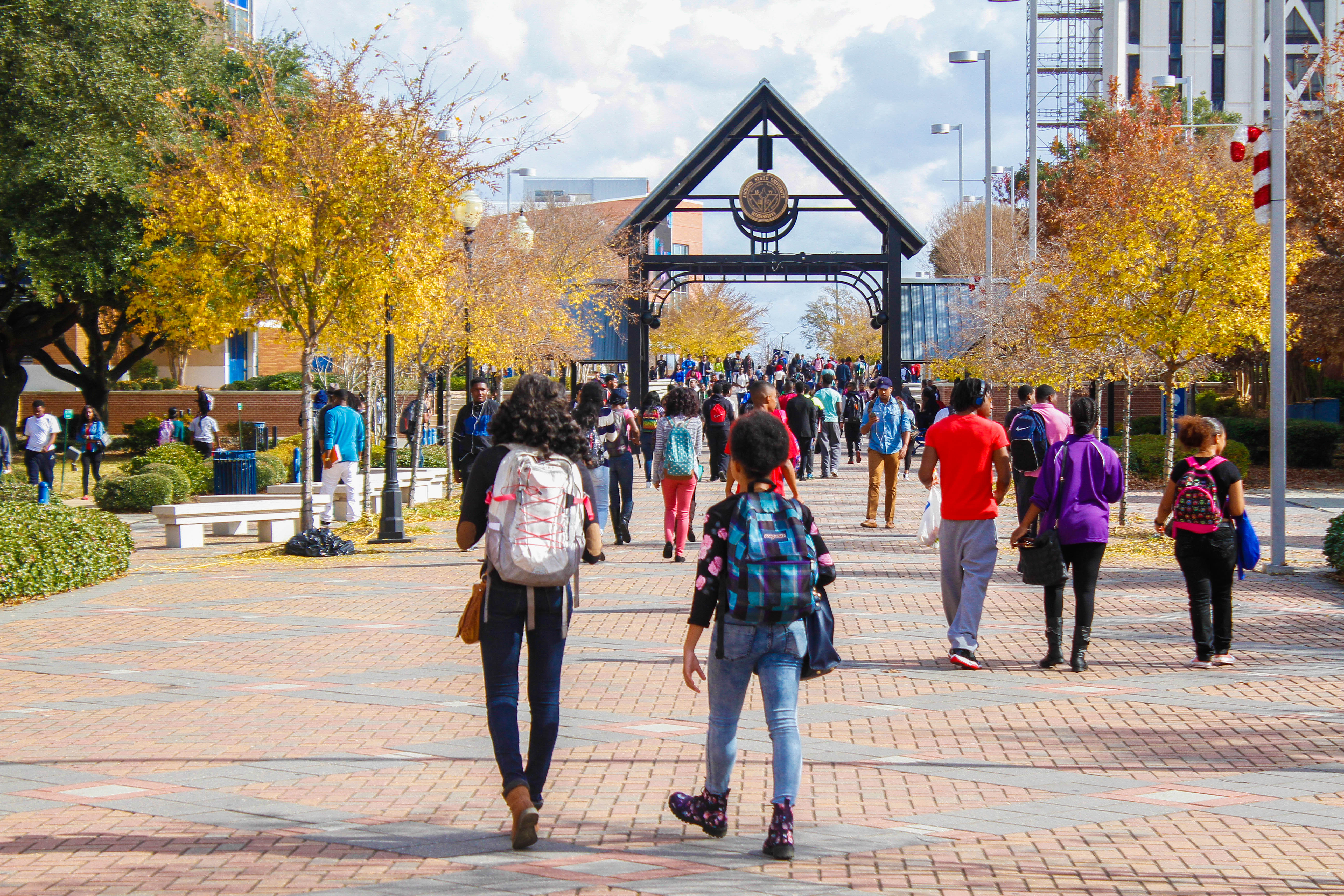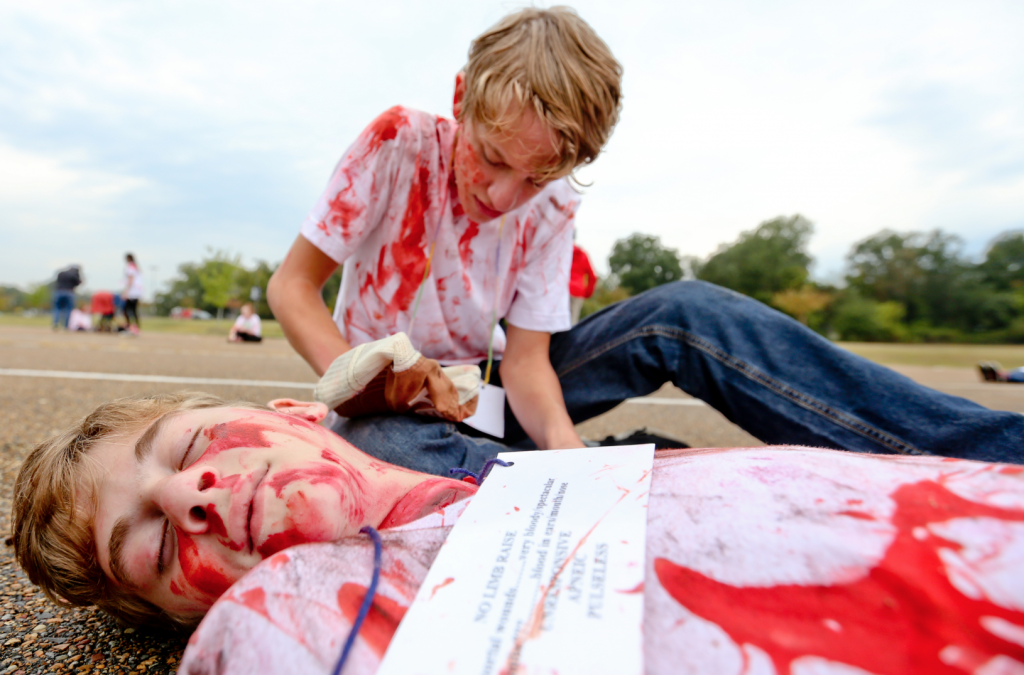
Local media swarmed Jackson State University to capture gory images of bloody, broken, maimed and dead bodies in the parking lot of the Lee E. Williams Athletic and Assembly Center during a mock disaster drill Friday.
The event staged by the Mississippi Center for Emergency Service at the University of Mississippi Medical Center involved dozens of participants from the Jackson Public School District, Northwest Rankin and the Holmes County School District.
Young actors were guided by a number of professionals. They included disaster management, emergency medical services, fire protection and law enforcement, along with medical/nursing staff from local hospitals and public health agencies.
The mass casualty drill is a component of the core curriculum of the Advanced Disaster Life Support training course provided by UMMC via funding from the Mississippi Office of Homeland Security through the Central Mississippi Medical Response System.
While commending JSU for hosting the training event, Dr. Carl Mangum, associate professor of nursing at the University of Mississippi Medical Center, said the mass casualty drill is especially important to the state.
“We need to be able to respond to different events, whether large or small scale. A huge event involving 50 or more victims isn’t something we experience every day, so, we go through this exercise to make sure we’re prepared.”
Compared to larger cities such as New York and Chicago, Mangum said, “Mississippi is one of the most prepared states. (Hurricane) Katrina taught us a lot. We’re well prepared to respond to any type of emergency that can happen. We have a strong relationship with MEMA (Mississippi Emergency Management Agency), the state department of health and with federal agencies.”
Furthermore, Mangum said, “The main message to the public is that disasters can happen anywhere. We all need to be prepared individually and as families. With all the things going on in the country, we don’t need to wait on the government to come save us. We must be able to take matters into our own hands until help arrives.”
Aside from natural catastrophes, Mangum said area disasters could range from large fires to industrial accidents.
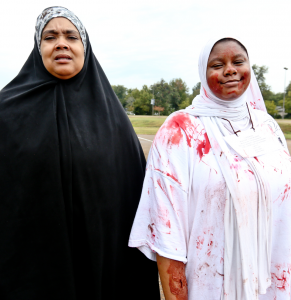
Stephanie Hameed of Canton attended the event as a chaperone with her 13-year-old daughter, Kyla Thurston, a Northwest Rankin student-actor covered in fake blood.
“This event prepares individuals for things that happen unexpectedly in life,” Hameed said. “I was in New York some years ago when the city experienced a blackout, and telephones were down. There are a lot of uncertainties in disaster situations, forcing strangers to support one another by working together to restore calm and order.”
Hameed said her son, now 20, participated in another mock disaster drill years earlier that influenced him to volunteer today with a fire department in Starkville and earn his “jaws of life” license.
Sarah Goff, a registered nurse in the adult emergency room at UMMC, said, “We have tornadoes that come through frequently, and we have hurricanes. We even have risks for earthquakes because we’re near a fault line. We take an all-hazard approach to focus on how to respond to anything – man-made or natural disasters.
Speaking on behalf of JSU, emergency manager Willie Gray Jr. urges Mississippians to always be prepared.
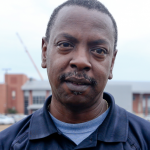
“If you see something, say something. If you know potential danger is approaching, have a disaster kit ready. Overall, this mock training is good for Jackson State and the community. We’re looking to strengthen our partnership with our outside neighbors so that we can better respond to protect the campus.”
Previously, Gray worked 25 years for the Jackson Fire Department and has witnessed a number of tragic situations, including infernos and plane crashes that involved multiple casualties.
“Communication is one of the most important aspects of emergency training,” Gray said. “This is because we have several different agencies working together on different radio channels. Since Katrina, things have improved with the state moving to one radio system called MSWIN (Mississippi Wireless Integrated Network).”
He said the technology allows for reliable communications under extreme conditions such as hurricanes, ice storms and floods.
